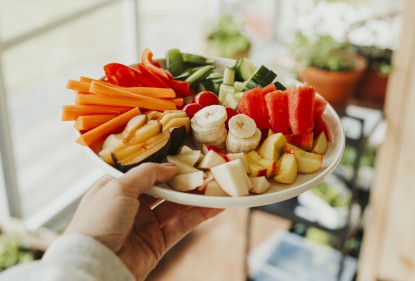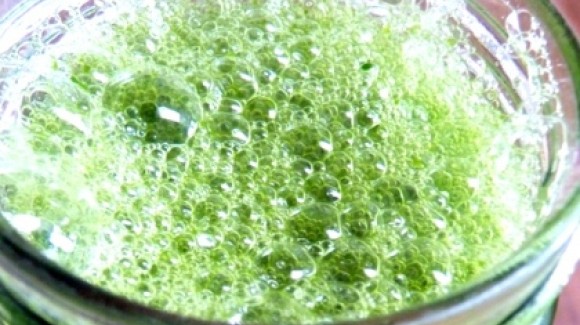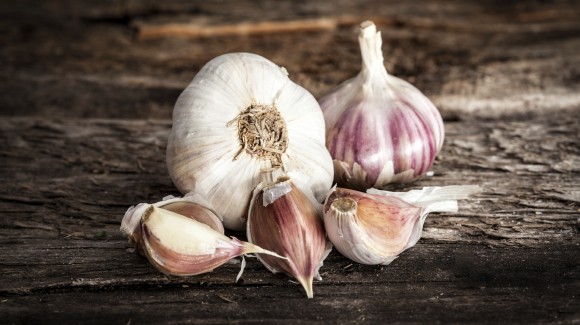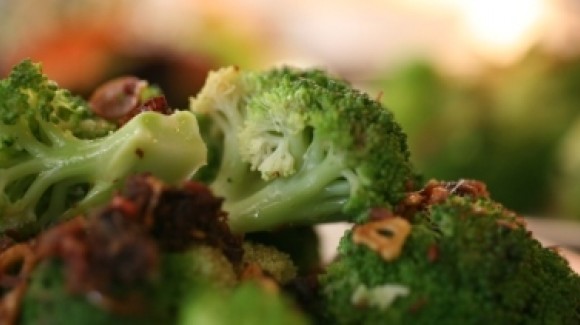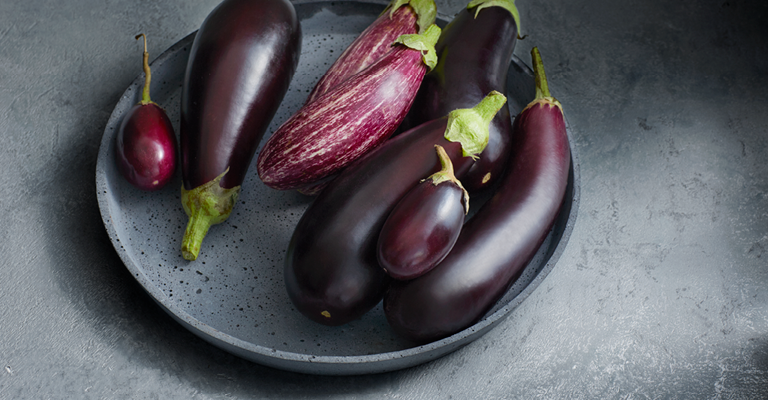
Health & Beauty
Who eats 7 serves a day?
That’s right, you read it right seven not five. My mind is blown.
Like others I have spoken to recently, I have assumed that is still two serves of fruit and three of vegetables. And to think, I was always slightly chuffed with my vegetable intake.
When looking at my diet, I wondered two things:
1. Do I in-fact eat enough fruit and vegetables as it is now recommended
2. When thinking about ‘serves’ what does that actually look like on my plate?
Serves in my mind would maybe a whole piece of fruit or a palm full of greens for example.
In recent weeks and especially this one, my routine has involved travel, nights away, which means at times not having much control over your diet, or does it?
Raw, steamed or baked I’ve been a big fan of vegetables, but at times would not consume as much fruit when working at a 9-5 desk-job and it being winter in Australia. However when your routine changes and you may not be the present chef for your three daily meals, throwing in some travel and time away from the kitchen, how do you ensure that you’re getting the daily intake you need?
As adults it’s recommended our daily intake is 5 serves of vegetables and 2 serves of fruit, here is what the Eat for Health site recommends:
According to eatforhealth.gov.au a serve of vegetables is about 75g (100-350kJ) or:
- ½ cup cooked green or orange vegetables (for example, broccoli, spinach, carrots or pumpkin)
- ½ cup cooked dried or canned beans, peas or lentils (preferably with no added salt)
- 1 cup green leafy or raw salad vegetables
- ½ cup sweet corn
- ½ medium potato or other starchy vegetables (sweet potato, taro or cassava)
- 1 medium tomato
Fruit:
Standard serve is about 150g (350kJ) or:
- 1 medium apple, banana, orange or pear
- 2 small apricots, kiwi fruits or plums
- 1 cup diced or canned fruit (no added sugar)
Or only occasionally:
- 125ml (½ cup) fruit juice (no added sugar)
- 30g dried fruit (for example, 4 dried apricot halves, 1½ tablespoons of sultanas)
But why should we even eat fruit and vegetables?
‘A diet rich in vegetables and fruits can lower blood pressure, reduce the risk of heart disease and stroke, prevent some types of cancer, lower risk of eye and digestive problems, and have a positive effect upon blood sugar, which can help keep appetite in check.’ Harvard T.H Chan (n.d)
Not only can eating fruit and vegetables be beneficial to your health, it can also have a positive impact on your mental health. What you consume and how much of it can effect your mental health, ‘for example, eating lots of fresh fruits, vegetables, nuts, and whole grains can reduce your risk of some mental health conditions such as depression, while eating foods that are high in sugar and saturated fat may increase your risk.’ (Head to Health 2019)
When I think about my daily intake, I know that I would most certainly fulfill the potato and other starchy vegetable quota, and I’m pretty sure I get the fruit part most of the time, however it’s made me take a good, long hard look at myself and think about my diet and intake of vegetables.
An example of my diet (looking at the vegetables and fruit factor alone) this week looks like the following
Example one
8 or so strawberries
250ml of juice (which states that there is a serve of oranges)
Dinner, 1 potato, ¼ cup of green beans and steamed carrot and ½ cup of pumpkin
Example 2
At home, we’ve been obsessed with our juicer and are lucky it’s citrus season.
This day consisted of a fresh orange and pineapple juice
1 avocado
1 tomato
Meaning, probably like many Australians, my fruit intake was great however my vegetable intake was lacking observing my diet made me reflect, I can say that with the lack of vegetables in my diet over the past 7 days, I have personally felt bloated, slightly sluggish and fluid retention.
I have been slightly alarmed by my past week of travel and change of routine which has led to a fruitful diet but alas minimal veggies, which has led me to discover or re-discover quick and effective snacks to add into my diet.
Snack ideas:
- Hummus and carrot sticks (did you know hummus can be made from so many tasty vegetables: pumpkin, avocado, beetroot, carrot and parsnip)
- Celery and peanut butter
- Snack cucumbers (Qukes)
- Snack tomatoes
Here are some quick meal ideas that can be jam packed with more vegetables and fruits for your diet too:
- Soup with any vegetable
- Wraps
- Stir fry
- Roast vegetable medley
- Vegetable lasange
I mentioned my juices before, but these top two are my go to at the moment
- Orange and pineapple, pending on how much you want to make, I have generally put in six oranges and one pineapple
- Apple, carrot and ginger – this is a great one for winter, four apples and three carrots (depending on your taste) ginger is a strong flavour, I’ve found when juicing fresh ginger you do need to be a little generous but that of course depends on your taste, start with a 5cm piece and go from there.
Realising my vegetable intake was lower than normal, this week really made me consider what I was preparing, for you to assess if you’re consuming the recommended daily intake, there are a number of apps, that can help you track your diet or the ole’ pen to paper, I like to make notes and lists when I can to keep me on track!
References
Eat For Health (2015, July 27) ‘Serve Sizes’ Retrieved from: https://www.eatforhealth.gov.au/food-essentials/how-much-do-we-need-each-day/serve-sizes
Harvard T.H Chan (n.d) ‘Vegetables and Fruits’ Retrieved from https://www.hsph.harvard.edu/nutritionsource/what-should-you-eat/vegetables-and-fruits/
Head to Health (2019, July 11) ‘Food’ Retrieved from https://headtohealth.gov.au/meaningful-life/physical-health/food
